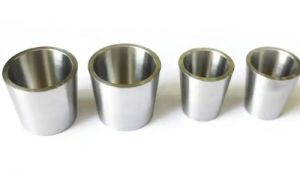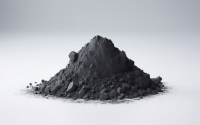Molybdenum Crucibles in Crystal Growth: Pioneering Semiconductors
Introduction
In the intricate world of semiconductor and electronic device manufacturing, the quest for precision and reliability is unending. At the heart of this pursuit lies the molybdenum crucible. These crucibles come from the robust metal molybdenum.

They play a pivotal role in crystal growth processes. They are the architects behind the creation of the high-quality crystals essential for semiconductor applications. Let’s have a detailed discussion about their features and uses in this article.
Understanding Crystal Growth: Definition and Requirements
–Definition:
Crystal growth refers to the process by which a solid crystalline structure is formed from its constituent atoms, ions, or molecules. It is a fundamental concept in materials science, chemistry, and physics. It plays a crucial role in the development of various materials with well-defined structures and properties.
–Requirements for Crystal Growth:
- Purity of Materials:
The purity of the starting materials is paramount for successful crystal growth. Impurities can interfere with the crystallization process. It leads to defects or irregularities in the crystal structure. High-purity precursors contribute to the formation of high-quality crystals.
- Molybdenum Crucibles
Molybdenum crucibles act as the vessel for this delicate procedure. It provides an environment that ensures the formation of flawless crystals. The significance of molybdenum in this context lies in its exceptional properties.
Exceptional Properties of Molybdenum Crucibles
1. High Melting Point and Thermal Conductivity
Molybdenum boasts an impressively high melting point, surpassing 2,600 degrees Celsius. This characteristic is crucial in crystal growth processes.
That’s because extreme temperatures are often employed to achieve the desired crystal structure. The high thermal conductivity of molybdenum ensures uniform heat distribution and fosters optimal crystal formation.
2. Chemical Inertness and Purity
Molybdenum is known for its chemical inertness. That means, it does not readily react with other substances.
- In crystal growth, where the slightest impurity can jeopardize the quality of the final crystal, the chemical stability of molybdenum is invaluable.
- This inertness helps maintain the purity of the crystal. It also ensures it meets the stringent standards required for semiconductor applications.
3. Dimensional Stability
Molybdenum crucibles exhibit excellent dimensional stability even at high temperatures. This property is critical for precision control in semiconductor manufacturing.
The stability of molybdenum crucibles ensures consistency and reliability in the crystal growth process.
Related reading: Molybdenum Crucibles: Features, Production, And Cleaning
Crystal Growth in Semiconductor Manufacturing
The crystal growth process involves the gradual formation of a single crystal from a molten or vaporized material. Molybdenum crucibles play a central role in this process by providing a controlled environment. So, the crystal can develop without interference from external elements.
The steps involved in crystal growth with molybdenum crucibles include:
- Material Loading:
The raw material is usually in the form of a polycrystalline substance. It is loaded into the molybdenum crucible.
- Melting and Solidification:
The material is subjected to high temperatures, causing it to melt. Subsequent cooling leads to the solidification of the molten material into a single crystal.
- Slow Cooling:
The controlled cooling process is crucial for the gradual and uniform growth of the crystal. Molybdenum crucibles ensure that the cooling occurs in a controlled manner.
It also prevents sudden temperature fluctuations that could impact crystal quality.
- Crystal Extraction:
Once the crystal growth is complete, the newly formed single crystal is carefully extracted from the molybdenum crucible.
Applications: Semiconductor and Electronic Device Manufacturing
The crystals grown in molybdenum crucibles serve as the foundation for semiconductor and electronic device manufacturing. These high-quality crystals are often composed of materials like silicon or gallium arsenide, and they are sliced into wafers.
The wafers then undergo intricate processes such as photolithography and doping to create the tiny transistors, diodes, and integrated circuits that power our modern electronics.
Advanced Refractory Metals: Quality Molybdenum Crucibles
In the realm of molybdenum crucibles for crystal growth, Advanced Refractory Metals (ARM) stands as a distinguished supplier. It provides high-quality crucibles designed to meet the exacting standards of semiconductor manufacturing.
Conclusion: Shaping the Future of Electronics with Molybdenum Crucibles
Molybdenum crucibles are unsung heroes for semiconductors. It is silently shaping the future of electronics. Their role in crystal growth enables the creation of high-purity, flawless crystals.
In laboratories and cleanrooms, where precision is paramount, the choice of the right crucible material can make all the difference. Molybdenum, with its exceptional properties, has emerged as the material of choice.
Advanced Refractory Metals (ARM) specializes in offering diverse molybdenum products. Personalized solutions for molybdenum crucibles are also available. Send us an inquiry if you are interested.
Related Posts

Common Types of Rocket Nozzle Materials

Molybdenum Powder Used as Papermaking Filler

